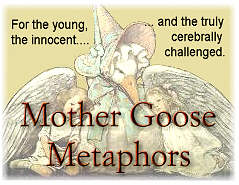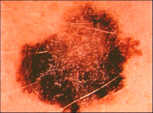 Most students of business management
are familiar with at least the first of Parkinson's major laws --
that "work expands so as to fill the time allotted for its completion."
First published in 1955 and expanded in the widely popular
book, Parkinson's Law: The Pursuit of Progress (1958),
Professor C(yril) Northcote Parkinson, a noted British
novelist and historian, came up with the principles to
explain certain quirks of human behavior and how they relate
to the management of organizations.
 The left-leaning
British press mocked Parkinson's work as "satirical" -
an orientation still accepted in many corners - even
many dictionaries. But satirical or no, Parkinson's
Law and the corollary principles it spawned are hardly
whimsical - but rather remind one of the famous
Shakespearian adage, "Many a Truth has been spoken in jest."
Indeed, given the harsh political realities that a study
of Parkinson's principles would reveal, it is no wonder
its author chose to give his delivery a
"tongue-in-cheek" spin.
The First Corollary:
"In only the rarest of circumstances can an
organization succeed if the fulfillment of a singular assigned mission means
an end to the purpose which created it. If not provided with
a subsequent mission, the organization will actually impede
the goal(s) for which it owes its very existence."
 The stated purpose of
the American Cancer Society, and hundreds of lesser lights in
what would become known as the 'War on Cancer' - (remember that one? That's right.
Richard Nixon) - is to find a cure for cancer!
 Year after year, these organizations
collect hundreds of millions of dollars promising that
effective treatment for cancer is right around the corner.
"We can complete the Mission. We can stamp out cancer
in your lifetime. But we need your help!"
"It is disastrously naive to think
that a highly
funded establishment set up to find a cancer cure
could ever effectively work to that aim.
 All organizational structures assume macrobiological
characteristics taken from the organisms who comprise them.
In the current context, they are human - and
like all animals, each is organically programmed to live,
survive, grow, expand, procreate. And so it is
with the organizations humans create.
All organizational structures assume macrobiological
characteristics taken from the organisms who comprise them.
In the current context, they are human - and
like all animals, each is organically programmed to live,
survive, grow, expand, procreate. And so it is
with the organizations humans create.
 To ask the
American Cancer Society or the National Cancer
Institute to find a cancer cure is to say,
'Now go. Be successful. And once you have
achieved your aim, promptly commit suicide.'
To ask the
American Cancer Society or the National Cancer
Institute to find a cancer cure is to say,
'Now go. Be successful. And once you have
achieved your aim, promptly commit suicide.'
 For once a
real cancer cure or cures are announced, the
need for these organizations, which collect
hundreds of billions of dollars in the aggregate
annually for treatment and research - from governments,
agencies, foundations, corporations, insurance companies,
and private individuals - all of them, without
exception, will have lost their reason
for existence.
For once a
real cancer cure or cures are announced, the
need for these organizations, which collect
hundreds of billions of dollars in the aggregate
annually for treatment and research - from governments,
agencies, foundations, corporations, insurance companies,
and private individuals - all of them, without
exception, will have lost their reason
for existence.
 That is why a cancer cure
will never come from their quarter: the
very nature of their mandate is a violation
of Natural Law. It is a grand act of political
expediency and managerial stupidity that has
made what should have been an easy-to-solve
medical puzzle and turned it into the single
greatest act of man-made carnage in history
-- a fraud of
unspeakable magnitude that has spanned more
than a century, and has needlessly caused
the premature deaths of tens of millions
of people."
That is why a cancer cure
will never come from their quarter: the
very nature of their mandate is a violation
of Natural Law. It is a grand act of political
expediency and managerial stupidity that has
made what should have been an easy-to-solve
medical puzzle and turned it into the single
greatest act of man-made carnage in history
-- a fraud of
unspeakable magnitude that has spanned more
than a century, and has needlessly caused
the premature deaths of tens of millions
of people."
 Year after year more and
more money is spent on a virtual potpourri of money-seeking
cancer foundations, agencies and societies. And year after year
cancer incidence grows
higher and higher. What little progress is reported
by the pollyannas of the cancer industry can primarily
be attributable to early detection and
prevention - activities which cannot begin to address,
quantitatively, the large sums invested each year in
cancer research and treatment.
"In terms of the big picture, we are continuing to make progress, but we have a very long way to go." *
Michael Thun
Head of Epidemiology
American Cancer Society (Atlanta)
* Translation: Every year we must show you results. After all, you won't
support us if you don't think we're getting something done. On the
other hand, we can't be too successful - and we most certainly
can't afford to come up with a cure - after all, if we did that, how could we
come back to you next year and get more of your money? Get real! Do you have
any idea how many people would be out of work if anybody uncovered a real
cure for cancer? (Taken from:
USA Today, Health &
Science section, June 5, 2001.)
|
The Second Corollary:
"Organizations assigned to 'finding a cure' - for
anything, regardless of what it is, will always lean towards
those treatments which are the most expensive, the most
complicated, and least accommodating to self-administration.
Only in this way can the organization justify its propensities
for greater growth and funding requirements,
restrict competition by raising the thresholds of specialized education
and knowledge, and filter out potential
rivals by setting large capital requirements as a 'sine non quo'
to even participating."
 To anyone who has had to go
through the agony of dealing with a relative who has advanced
cancer, the usual questions always arise: Why are the therapeutic
options so expensive? Why are the protocols so involved? Isn't
there more that we can do from our side to help our loved one?
Why aren't there any simpler or less expensive solutions?
 The Second Corollary
makes all this clear.
 In the past, before the
emergence of the Medical Industrial Complex, the great diseases
of the ages also presented great challenges. Mankind sought
cures -- and in time cures were found. Easy, cheap,
self-administered cures. For pellagra? Niacin. The cure
for scurvy? Vitamin C. The cure for rickets? Vitamin D.
 Easy solutions were found
because they came from traditional cultures without commercialized
medicine (i.e. it came from an indigenous culture) and there was
no established, highly funded, self-serving organizations around
to suppress them. This is, admittedly, a simplification of
the historical facts, but the fundamental principle is not
easily debated. Money does not aid the search for cures;
in fact, on balance it actually acts more as a deterrent.
 Our Second Corollary
draws from the second of Parkinson's Laws -- that
"expenditures rise to meet income." Every year, the collection
plate goes out -- to government, industry, foundations and
private individuals. "Give us your money ... because we're making
progress every day and we can't stop now -- we're too close!"
Revenues rise, so therefore, expenditures must be created to
justify the revenues. This makes the search for medical solutions
that are inexpensive, easy, or self-administered so anathema.
It is why the entire apparatus of the medical establishment,
the food and drug authorities, and the pharmaceutical industries
are set up to suppress anything that does not support their
endemic need for big, expensive solutions. To embrace more
simplistic approaches is suicidal. That is why and how the
medical field, most particularly as it pertains to the cancer
industry, has become so corrupt. It wasn't born corrupt. It
became corrupt because money and organizations have their own
unique dynamic.
 Or ... to rephrase
our First Corollary: "The need to survive and grow is greater
than the need for the organization to fulfill its original purpose."
This in turn plays upon another of Parkinson's own corollaries:
"Officials want to multiply subordinates, not rivals."
You cannot justify the need for growth and an increase in
subordinates by chasing easy, inexpensive solutions.
The Third Corollary:
"The lack of a 'deadline' will always
infect an organization on a mission as obscure as
finding a 'cure' with structural elephantiasis.
Parkinson's original law also stated
'Any project assigned without a deadline is likely
never to be completed.' The fact that the organization
itself, out of survival, will band with like organizations
to suppress rivals who would suggest that the mission
is completed and the deadline past, only puts this
principle on steroids and produces yet greater obstruction
to the original mission."
 This corollary explains
why the cancer industry is so hyper about the words "cancer"
and "cure" ever appearing together. "Cure" translates
into "end of mission." "End of mission," in turn, translates
into "end of the money train."
 Again, success in
cancer treatment means death to those assigned to find
effective treatment.
The Fourth Corollary:
"If you want to make your organization bigger
(and all of them do) then you must make the problem bigger.
Big budgets cannot be sustained in the presence of easy solutions.
That means that survival demands that you use whatever
means are at your disposal to suppress alternatives by
rivals that would prove compellingly contrary. You cannot sustain
an illusion in the public mind that the problem is bigger
than it really is if you aren't willing to quelch
those capable of undoing the big lie that forms
the cornerstone of your operation. Advancing your
cause requires a maximum, sustained effort to destroy
those capable of providing an end to your grand 'raison d'tre'
and the many growing, demanding, and expensive
projects which it consequently spawns."

 Back in 2002,
I was visiting friends in
Hot Springs, Montana (USA) - located on the Flathead Indian
Reservation (a name not appreciated by its inhabitants,
the Salish and Kootenai indians).
 On visiting a Salish chief
to talk about indigenious herbs north of the Bitter Root
Valley, I heard amazing stories.

 "My grandmother lived
to be 103 years old," he said. "She cured herself of many
illnesses throughout her life, primarily through the use
of herbs. Back in those days you didn't have modern
medicine. You didn't have all these expensive hospitals,
with their expensive drugs, expensive procedures ...
white men brought all that crazy stuff.
 "Every tribe had
its own knowledge and its own medicine men. They knew
the healing abilities of the plants on their land ...
how and when to pick them; what parts to use; when and
how to use them. It was all simple and natural.
We had the Kootenai to the North... and the Blackfoot to
the East.

 "We are losing all that
knowledge now. White men have polluted our youth with the
idea that our ways of the Earth are backwards. This
lack of respect extends even to our language. There are
only 50 people remaining on this Earth who can still speak
the Salish tongue. I know - because I teach a small
class for those in our tribe who still want to learn.
Recently we lost our (shaman)... she was an old
woman when she died, and although she looked for a young
protege to continue with her work, she never found one.
She took great knowledge with her... many things I am
sure no one still alive knows."

 Whatever this
knowledge was that was taken from the earth -- it was,
no doubt, a victim of the Fourth Corollary.
|

 John Dribble was a project manager
at the Kah-Kah Cola Bottling Company. His job was to create newer
and better versions of his company's best-selling
soft drinks -- and he wasn't content with mere feeble attempts to improve the
company's flagship products.
 To John, making the best
Kah-Kah ever was a top priority.

 One day, John had a thought:
what if he could make Kah-Kah so filling, so satisfying, and so
thirst-quenching, that the customer could go for a year or more,
without experiencing a need for another soft drink.
 "Imagine!," John
thought to himself, "we'll have the only soft drink in the
world that gives so much value to the customer, so much
fulfillment... why would anyone buy any other
soft drink? Everybody will buy Kah-Kah!"
 So John went to work,
using his department's extensive financial resources, hiring
the best minds in biochemistry, food & beverage science
and product development. Although the company officials who
were working above him knew John was committed to making
a better product - they had no idea how serious he was
about making the best product. One year turned into
two years ... two years into three.
 Finally... just about
the time he had exhausted all available favors from friends and
colleagues at Kah-Kah, he did it. John found a way to make
Kah-Kah into the ultimate beverage experience. It was
complete and fulfilling in every way.
 To test his new
prototype, John began giving his product away to other
employees within the company. Members of his staff and
employees in the engineering department were the first
to try the product. And then it spread. Soon,
employees all over the company were asking for John's
new version of Kah-Kah, bringing it home to their friends
and families.
 John was so pleased
that so many people fell in love with HIS version of
Kah-Kah -- but then something even stranger happened.
Suddenly, without warning, people at his company stopped
asking for the product.
 John asked his
secretary, Cherry, "What do you think is happening?"
 "I don't know,"
Cherry replied. "The Kah-Kah you gave me was the best
I ever tasted. It was WONDERFUL -- only it was so good
and so fulfilling, I haven't wanted any Kah-Kah since!"
 It was then
that John realized that he had created the ultimate
soft drink.
 The next morning
John reported to work at his usual time -- 8 a.m. --
grabbed his usual cup of coffee, and headed for his office.
 Much to his surprise,
when he got to his office, John was greeted by the
President of Kah-Kah Cola, Mr. Isaac Tapdanz, who
was sitting at John's desk.
 "Good morning, John.
 "Why, Mr. Tapdanz...!
 "Save it, John," the
chief executive said, interrupting, "we have an emergency
Board Meeting in 10 minutes, and you're the guest of
honor!"
 John was stunned. He
didn't know what to say, but he followed Mr. Tapdanz into
the next building and up the elevator to the Boardroom
on the 38th Floor.
 "Gentlemen!"
Mr. Tapdanz boomed as he announced John's arrival, "This
is our very own Mr. John Dribble - the man we've all
been hearing so much about!"
 Following a few
moments of acknowledgements and handshakes, the Board
sat down at every available seat, leaving only
John standing at the edge of the Board's long oak table.
 "John," Mr. Tapdanz
said, breaking the ice, "This is our Chairman,
Murray Pembers. You know him, of course, but you two have
never met. He also represents the majority shareholders
in our company and is the great-great grandson of our
founder... He would like to have a few words with you."
 "Mr. Dribble --
are you the one responsible for this new product,
the one everyone seems to be talking about?"
 "Yes, sir,"
John replied proudly.
 "Do you have any idea what you've done!" "Do you have any idea what you've done!"
the Chairman exploded.
 "But, Mr. Pembers, I thought
this was my job. I'm SUPPOSED to work to make the product better,
to make drinking Kah-Kah as fulfilling as possible."
 "Your job is to do no
such thing," Pembers interjected. "This business is built on
repeat sales. It is built, like all consumer-product companies,
on the primary goal of making consumers DEPENDENT on what we
sell -- to maximize revenues for the benefit of our stakeholders.
To the extent that it gives them what they want, fine.
To the extent that it deters the number of people who use our
products OR the amount of sales we can exact per customer,
you can forget it." Turning to Mr. Tapdanz, Pembers added,
"How could you let such an imbecile get to such a position
of importance in our organization?"
 "I can explain..." John Dribble insisted.
 "Never mind," Pembers interrupted,
after which he gave John Dribble specific instructions and
asked him to leave the Boardroom.
 "Is this everything?" Mr. Tapdanz
inquired an hour later, convening with John in his office.
 "Yes, sir -- all my notebooks,
all the lab reports, formularies, five remaining cases of prototype --
that's it. Everything..." John Dribble noted dutifully.
 "John, I want you know that
you've done an incredible job. You're the best product development
man I know in the beverage industry. You've done more with less,
accomplished greater things in less time, than any previous
technician in your field. I know this project was dear to your
heart, and I know you would have liked to see the very best
version of Kah-Kah succeed in our business."
 "Yes, sir ... I would,"
John reaffirmed, standing attentively.
 "Maybe in the future --
when people are ready for it. Perhaps when competitive forces
require us to create a comparable product."
 "Yes, sir. I understand
perfectly," John added, turning to walk towards the office door.
 "Oh.. and John."
 "Mr. Tapdanz?"
 "Please see my secretary
on your way down the hall. She has your personal belongings
and a check waiting .... you're fired!"
"You're Missing The Point --
We Doctors Make More
Money If We Can Get
People To Accept Cancer
As A Chronic Illness!"
 On Sunday, July 27, 2003, newspapers
around the U.S.
ran
an article written by Daniel Q. Haney of The
Associated Press. Headlines varied, one read:
"Research leaves doubts cancer is curable."
 If our work at Alpha Omega
Laboratories did not allow to have an insight into not only
highly effective remedies but the political machinations that
prevent good treatments from going mainstream, we wouldn't
carry such a jaded view. Most of our customers know how the
real world works, so they don't need "Mother Goose Metaphors."
For those of you who are still poly-smart-world-citizens-in-training,
here is your translation:
 "We're here to
announce that although we don't have a cancer 'cure' yet,
(and why should we? We're committed to NEVER finding one),
we are approaching a point where cancer can be treated
as a CHRONIC ILLNESS. Isn't that wonderful?
In this fashion we get to run up the medical costs
of any given cancer case over many years, even decades. Think of the new
oncological paradigm as a kind of medical mortgage.
The cost of treatment will be higher than ever before,
but by spreading the cost over many years, we hope
you won't figure out the underlying financial dynamic.
And if YOU can't figure out what's going on, the
politicians will be powerless to change it! ...
Now there's medical progress!" "We're here to
announce that although we don't have a cancer 'cure' yet,
(and why should we? We're committed to NEVER finding one),
we are approaching a point where cancer can be treated
as a CHRONIC ILLNESS. Isn't that wonderful?
In this fashion we get to run up the medical costs
of any given cancer case over many years, even decades. Think of the new
oncological paradigm as a kind of medical mortgage.
The cost of treatment will be higher than ever before,
but by spreading the cost over many years, we hope
you won't figure out the underlying financial dynamic.
And if YOU can't figure out what's going on, the
politicians will be powerless to change it! ...
Now there's medical progress!"
|









